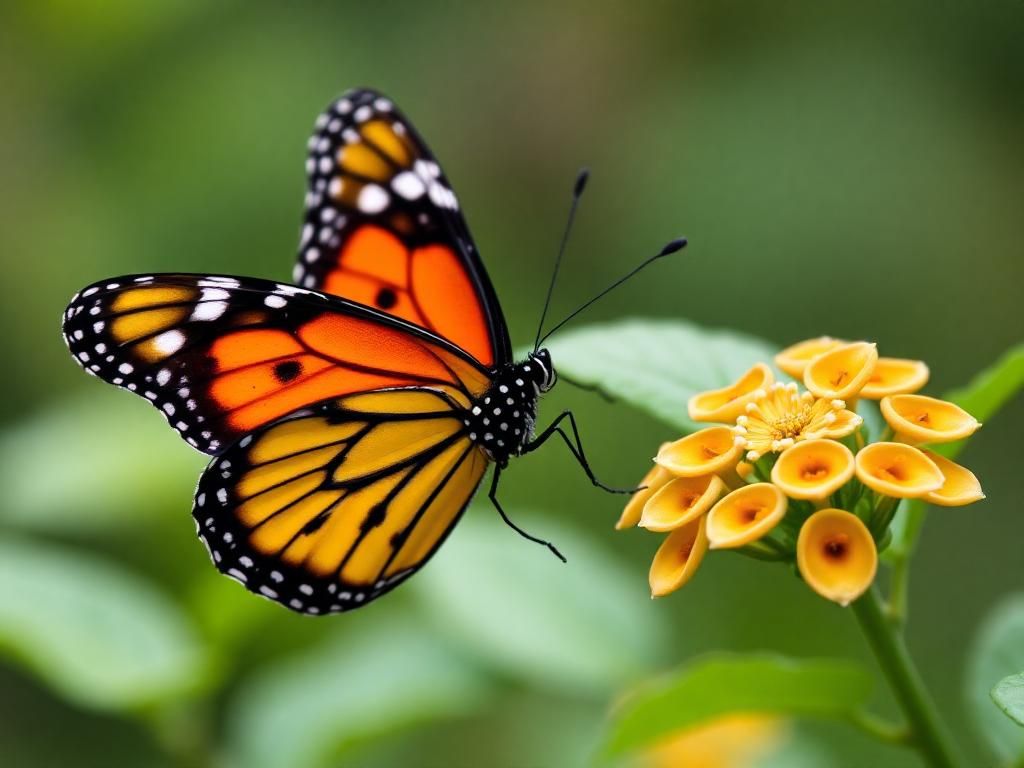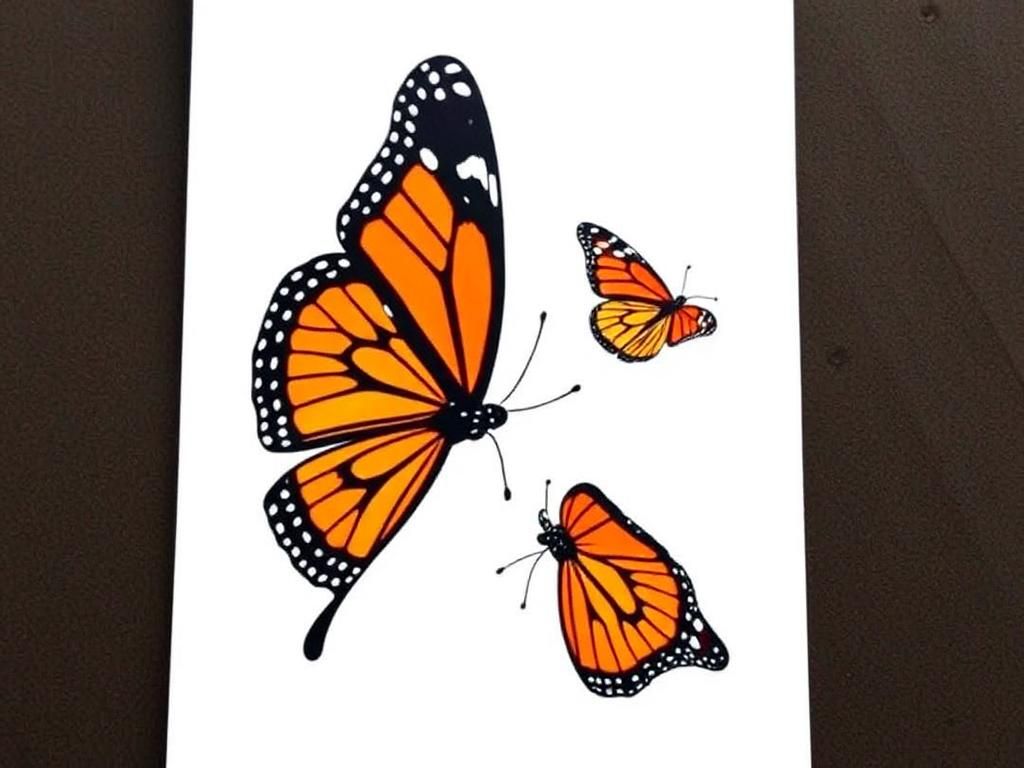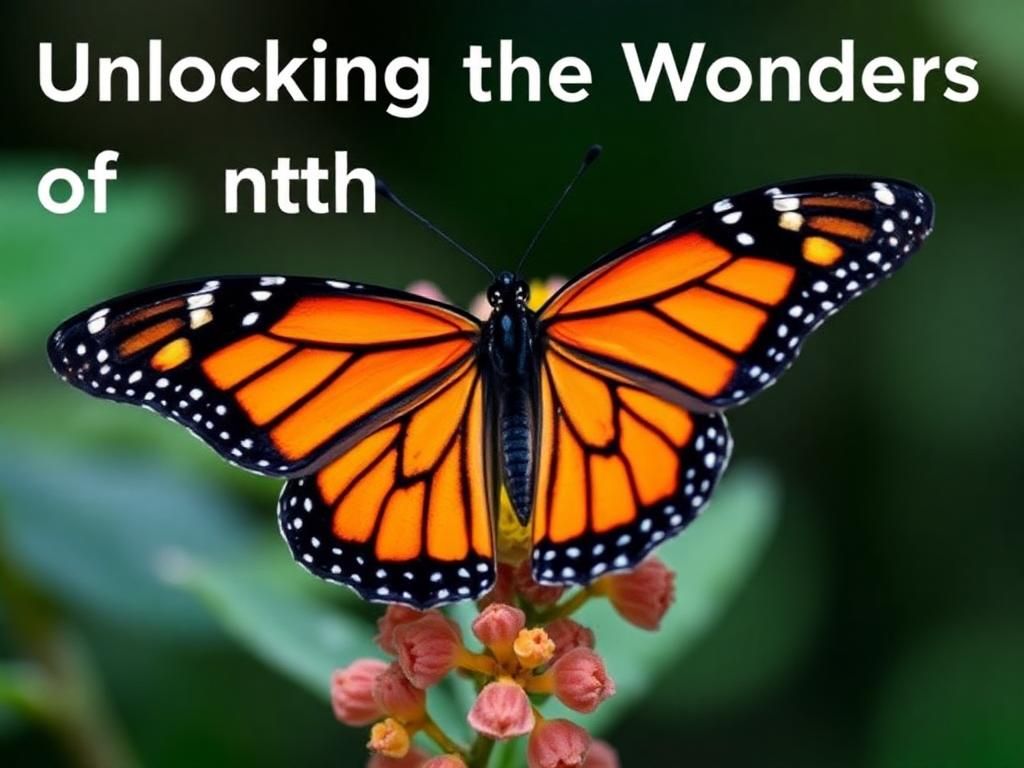Butterflies are integral components of ecosystems, captivating our interest with their delicate beauty and crucial ecological roles. Among the myriad of butterfly families, the orange and black butterfly holds a special allure, showcasing stunning colorations that serve both beauty and purpose in nature. This article dives into the fascinating world of these butterflies, exploring their identification, habitats, behaviors, ecological roles, threats, conservation efforts, and more.
Identification of Orange and Black Butterflies
Physical Characteristics
One of the most striking features of the orange and black butterfly is its vibrant color pattern. These butterflies typically exhibit a rich mix of orange and black, which serves as both camouflage and a warning to predators about their toxic nature. Different species may vary in size, but they often present a similar aesthetic appeal.
When examining the orange and black butterfly, one can note the distinct shapes and sizes of their wings. Forewings tend to be larger and more elongated compared to the hindwings, which are often rounded. The patterns observed, such as intricate spots and stripes, contribute to their uniqueness and play an essential role in species identification.
Common Species
Several species of butterflies fit the description of orange and black butterflies. Prominent among them are the Monarch Butterfly and the Viceroy Butterfly:
– **Monarch Butterfly (Danaus plexippus)**: Recognized for its vibrant orange wings marked with black borders and white spots. The Monarch is found widely across North America, often in open fields and gardens, famous for its long migration journey.
– **Viceroy Butterfly (Limenitis archippus)**: Though it closely resembles the Monarch, the Viceroy can be identified by a horizontal black band across its hindwings. This butterfly prefers habitats like wetlands and riverbanks and often mimics the Monarch’s vibrant colors to ward off predators.
Other notable species include the Black Swallowtail (Papilio polytes) and the Red Admiral (Vanessa atalanta), both of which exhibit attractive orange and black coloration, yet differ in their habitat preferences and specific markings.
Habitat and Behavior
Preferred Habitats
The orange and black butterfly can thrive in various ecosystems, reflecting their adaptability. Common environments include:
– **Meadows and Fields**: Open areas with abundant flowering plants attract these butterflies, offering them essential nectar sources.
– **Forest Edges**: These regions provide shelter and a mix of sunlight and shaded areas, conducive to sustenance and reproduction.
– **Gardens and Urban Settings**: Well-tended gardens rich in flowering plants can serve as perfect sanctuaries for these butterflies, making them suitable for urban landscapes.
Life Cycle and Development
The life cycle of a butterfly comprises four stages: egg, larva (caterpillar), pupa (chrysalis), and adult.
– **Egg Stage**: Typically lasts about 4-10 days; females lay eggs on suitable host plants.
– **Larva (Caterpillar) Stage**: This stage can last from 2 to 4 weeks. Caterpillars munch on leaves, causing significant changes in growth and size.

– **Pupa (Chrysalis) Stage**: Lasting about 1-2 weeks, this transformative phase occurs inside a chrysalis.
– **Adult Stage**: Once emerged, the adult butterfly can live from a few weeks to several months, depending on species and environmental conditions.
Mating and Feeding Behavior
Courtship rituals among orange and black butterflies are intriguing, with males often engaging in colorful displays to attract females. These rituals can involve aerial dances and wing-flapping displays to show off their vibrant hues.
As adults, butterflies primarily feast on nectar from flowers. They are drawn to a variety of plant species, favoring those rich in nectar, such as milkweed and asters. The selection of host plants for larvae is equally critical, influencing butterfly population dynamics.
Ecological Role
Pollinators
The orange and black butterfly plays a crucial role as a pollinator, facilitating plant reproduction through their feeding habits. Their movement from one flower to another aids in the transfer of pollen, ultimately contributing to the maintenance of biodiversity within ecosystems.
Food Source for Other Animals
While beautiful, these butterflies are also a vital food source for various predators, including birds and some insects. Their bright colors may represent a warning to potential predators, signaling toxicity—a protective adaptation developed to deter predation.
Threats and Conservation
Habitat Loss
Human activities have significantly impacted natural habitats, leading to the decline of butterfly populations. Urbanization and agricultural practices have altered landscapes, reducing the availability of the orange and black butterfly‘s preferred habitats.
Climate Change
Changing temperatures and extreme weather conditions pose additional challenges to the survival of these butterflies. Altered migration patterns can disturb the timing of lifecycles, affecting breeding and feeding success.
Conservation Efforts
Numerous initiatives aim to protect the habitats crucial for the survival of the orange and black butterfly. Community involvement is vital; people are encouraged to participate in habitat restoration projects, such as planting native gardens and preserving natural areas.
Successful conservation case studies, like the efforts led by the Monarch Joint Venture, showcase the impact of human attention towards preserving butterfly populations.
Fascinating Facts about Orange and Black Butterflies

The world of the orange and black butterfly is filled with remarkable traits:
– Many possess unique behaviors such as nectar theft, where they “steal” nectar without pollinating the flower.
– In various cultures, butterflies symbolize transformation and change, often seen as messengers of hopeful news.
– Legends regard butterflies as embodiments of the soul, connecting humans with the spiritual realm.
How to Attract Orange and Black Butterflies to Your Garden
Plant Selection
To attract these stunning butterflies, select nectar-rich flowers and provide suitable native host plants for caterpillars. Suitable choices include milkweed, zinnias, and lantanas, which serve as feeding and breeding grounds.
Creating a Butterfly-Friendly Environment
Building a butterfly-friendly garden involves creating a diverse habitat featuring various flowering plants, sources of water, and some sheltered areas. Sunny spots are essential too, as butterflies rely on sun to regulate their body temperature.
Table of Key Species of Orange and Black Butterflies
| Species Name | Distinct Features | Habitat | Distribution |
|---|---|---|---|
| Monarch Butterfly | Vivid orange, black borders, white spots | Open fields, gardens | North America |
| Viceroy Butterfly | Horizontal black band on hindwings | Wetlands, riverbanks | North America |
| Black Swallowtail | Black body with orange and blue spots | Gardens, fields | North America |
| Red Admiral | Black wings with orange bands and spots | Woodlands, gardens | North America, Europe |
FAQ Section
What attracts orange and black butterflies to gardens?
The right combination of nectar-rich flowers and native host plants can attract orange and black butterflies to gardens.
What is the primary diet of orange and black butterflies?
These butterflies primarily feed on nectar from flowers but rely on specific host plants for their larvae.
How can I help conserve orange and black butterflies?
You can assist their conservation by planting native plants, restoring habitats, and spreading awareness about their ecological importance.
Are orange and black butterflies migratory?
Yes, species like the Monarch Butterfly are known for their long migrations, traveling thousands of miles between breeding and wintering grounds.
What is the lifespan of an orange and black butterfly?
Life expectancy varies by species; some live just a few weeks, while others can survive several months.
How can weather changes affect orange and black butterflies?
Sudden temperature changes and weather extremes can disrupt migration patterns and life cycles, impacting survival rates.
What role do orange and black butterflies play in pollination?
By moving from flower to flower, they facilitate plant reproduction, aiding biodiversity and enhancing ecosystems.
Can orange and black butterflies be found globally?
While primarily found in North America, similar species exist in various parts of the world, each adapted to their environments.
What is the significance of the color pattern in orange and black butterflies?
Their vibrant coloration serves a dual purpose: attracting mates and warning predators of their potential toxicity.
How do I create a butterfly-friendly habitat at home?
Prioritize planting a variety of native flowers, providing water sources, and ensuring sunny areas for warming and feeding.
References
– [Butterfly Conservation](https://butterfly-conservation.org)
– [The Xerces Society for Invertebrate Conservation](https://xerces.org)
